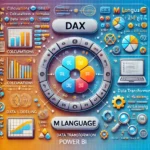Unveiling the Powerhouse: BigQuery vs. Bigtable
In the dynamic landscape of Google Cloud services, two heavyweight contenders, BigQuery and Bigtable, take center stage. As organizations navigate the terrain of data management and analysis, understanding the nuances of these platforms becomes essential. In this blog post, we embark on a journey to dissect the key attributes of BigQuery and Bigtable, assisting you in making an informed choice for your data needs.
Introducing BigQuery and Bigtable
BigQuery: As Google Cloud’s premier analytics data warehouse, BigQuery offers a fully-managed, serverless solution for analyzing vast datasets. Built for lightning-fast SQL queries and robust data processing, BigQuery’s distributed architecture and integration with Google Cloud services make it a go-to platform for data-driven insights.
Bigtable: On the other hand, Bigtable is Google Cloud’s NoSQL database service, designed for handling large-scale, low-latency workloads. Bigtable excels in applications that demand high-performance data storage and retrieval, such as IoT data streams, time-series data, and more. It’s based on the same technology that powers Google Search and Google Maps.
https://synapsefabric.com/2023/08/18/bigquery-vs-redshift-navigating-data-warehousing-titans/
Face-off of Features
Let’s dive into a head-to-head comparison of BigQuery and Bigtable:
| Aspect | BigQuery | Bigtable |
|---|---|---|
| Use Case | Ideal for querying and analyzing large datasets. | Suited for real-time, high-performance data. |
| Data Structure | Supports structured and semi-structured data. | Works best with structured key-value data. |
| Query Language | Utilizes SQL for querying and data analysis. | Employs API calls for data retrieval and updates. |
| Scalability | Auto-scales for large-scale analytical queries. | Automatically scales for performance demands. |
| Complexity | Simplified data analysis, suitable for analysts. | Requires more development effort for data modeling. |
| Latency | Query latency varies based on complexity. | Offers low-latency data access for real-time needs. |
| Storage | Stores historical data for analysis purposes. | Stores operational data for quick retrieval. |
| Integration | Seamlessly integrates with Google Cloud services. | Can be integrated with various Google Cloud tools. |
| Cost Structure | Based on usage, with query and storage costs. | Cost is based on node hours and storage usage. |
| Ease of Use | User-friendly interface for data analysis. | Requires a good understanding of NoSQL concepts. |
| Consistency | Eventual consistency with global data replication. | Provides strong consistency within a row. |
Selecting the Right Fit
Your decision between BigQuery and Bigtable hinges on your organization’s specific requirements:
BigQuery excels if you need to perform complex queries on large datasets and aim for data-driven insights. It’s well-suited for data analysts and business intelligence tasks.
Bigtable shines when you require real-time, high-performance data access, making it ideal for applications like IoT, time-series data, and more. It’s a solid choice for developers and data engineers dealing with real-time workloads.
BigQuery and Bigtable are distinct tools in the Google Cloud arsenal, tailored to different data scenarios. The choice between the two depends on the nature of your data, the type of workloads you handle, and your team’s expertise. By delving into the specifics of each platform, you can confidently make a choice that aligns with your organization’s data management and analysis goals.






